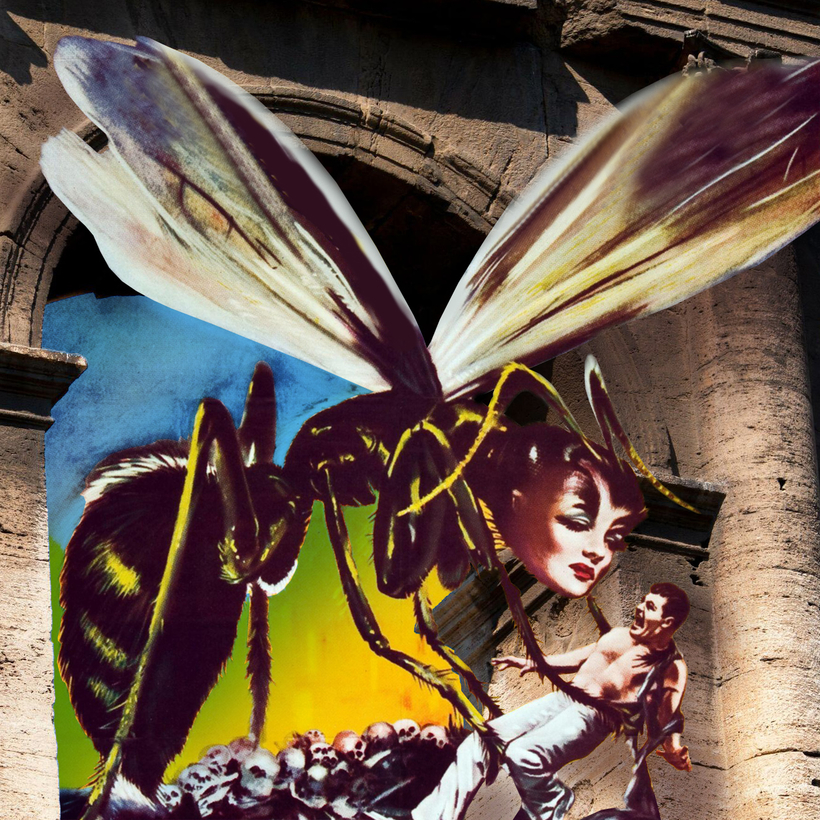Andrea Velardi had just settled down to dine on the terrace of his friend’s apartment near Campo de’ Fiori in central Rome when he felt an excruciating pain in his foot.
It was nearing sunset on a sweltering day in mid-August, and his friend had valiantly tried to kill off the unusually large wasps that had been swarming around the terrace before the guests arrived. “He wanted to protect us,” said Velardi. “But one on the ground beneath the table was still alive … the pain was tremendous, and my foot swelled up so much I couldn’t walk. I knew straight away that this wasn’t a normal wasp sting.”
Velardi, 48, had been struck by a Vespa orientalis, or oriental hornet, a species of wasp that originates mostly from North Africa and Southeast Asia whose presence in the Italian capital is growing sharply.
The reddish-brown hornets were initially found in the Monteverde district in 2021 – the first time the insects had been sighted in Rome since the 1950s – before venturing into the center of the city, where nests containing hundreds have sprouted in the nooks of window shutters, vents, air conditioning units and even the crevices of ancient monuments.
Velardi used an ice pack to tend to his foot before buying cortisone from a chemist and injecting it at home. He needed crutches to walk until the swelling and pain eased.

“We don’t yet understand the damage these insects can do, but I knew I had to act quickly,” he said. “This summer definitely marked a turning point. Other than the nests, the hornets are continuously invading open spaces like terraces and terrifying people, especially if there’s food – it’s impossible to enjoy having a snack on a terrace nowadays.”
In the absence of a strategy by Rome’s council to effectively handle the phenomenon, residents living in and around the city have been calling upon Andrea Lunerti, a zoologist and now well-known waspbuster, to remove nests.
“I am receiving so many calls at the moment, from everywhere,” said Lunerti. “People are seeing these big insects flying around – and the nests are huge, sometimes containing between 700 and 1,000.”
He needed crutches to walk until the swelling and pain eased.
In a recent case, Lunerti was called to the home of an elderly woman who returned from holiday in Sardinia to find a nest of 800 oriental hornets in a crevice in her bathroom. Recently, a window cleaner in his 50s fell from his ladder and died after being stunned by a swarm.
Daniele Piacentini, who lives with his father in an apartment in the east of Rome, found a nest in August in the shutter of the bathroom window. “We thought they were just ordinary wasps and would soon go away,” he said. “But this kind were stubborn and just grew and grew.” By the time Lunerti arrived in September, the nest contained about 500 oriental hornets.
The lingering high temperatures play a role in the higher number of oriental hornets, although Lunerti pins the blame more on Rome’s perennial struggle with rubbish. The two elements combined provide ideal conditions for the recent proliferation of the insects in urban areas.
“Rome is a very dirty city with the worst management of urban waste – there are open bins everywhere,” said Lunerti.
On top of that, the insects, although big, are slender enough to capitalize on cracks in buildings to nest and expand in a significant way. “They have the capacity to adapt to any environment and reproduce quickly,” added Lunerti. “This year we have seen more queen oriental hornets, who are mating with males perhaps from other colonies. The queens are much bigger and more frightening – they do not have the traditional dimensions of other wasps flying around the city.”
Oriental hornets are also present in other parts of southern Italy, especially in port cities such as Naples.
Angela Giuffrida is a Rome-based journalist

